Installing French Doors
Installing double doors requires more plumb and level readings, shim adjustments, and—above all—more patience than hanging a single door, but the procedure is much the same. So we’ll zip through the steps covered earlier to get to the heart of the matter. figuring out why the doors don’t meet perfectly in the middle and what to do about it.
► Measure the RO to make sure it’s big enough to install the door frame.
► Using a 6-ft. spirit level, see if the floor is level and the sides of the RO are plumb. Also check the walls on both sides of the RO for plumb. If the bottom of the opening is more than !/i in. out of level, correct the situation. French doors are wide and heavy and need to rest solidly on a level opening. Otherwise, they can rack and bind.
|
Install cap flashing atop the head casing, nailing its upper flange as high as possible. Here, this flashing will be overlapped by flashing paper and stucco. Cap flashing should overhang the casing slightly along the front and at the ends of the casing, so water drips free. |
► The sides of the RO can be shimmed, but if the wall framing isn’t plumb, place a 2×4 block against the base of the wall and strike the block with a sledgehammer. Go easy: Numerous gentle hits will cause less damage than one mighty blow.
► Remove the doors from the frame, center the frame in the RO, and tack it up with one 10d finish nail at the top of the frame on each side.
► Plumb and shim one side of the frame first. Shim behind the top hinge first, then the bottom, then the middle hinge—rechecking that the jamb is plumb, square, and flush to the wall as you go. Nail (or screw) the frame at each shim point. Shim and tack the other side jamb; shim and tack the head jamb, placing shims at thirds of the RO width.
► Next, rehang the doors. If everything is perfect, the doors will be in the same plane. There will also be a uniform Иб-in. to ki-in. clearance around the doors and an even ih-in. gap where they meet at the center. More likely, you’ll need to re-adjust shims. When the fit is perfect, use a utility knife to score the shims before snapping them flush to the finish walls.

FRENCH DOOR
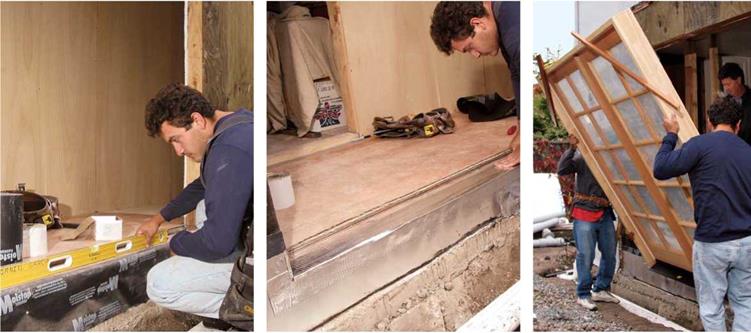

Because French doors are wide and heavy, it’s crucial that the subfloor of the opening be level. Insufficiently supported, French-door thresholds can flex, misalign, and admit water.
Barely above grade, this opening needed thorough waterproofing. Self-adhering bituminous waterproofing membrane seals the sheathing/foundation joint (just visible, lower left); this membrane is further covered by galvanized sheet metal. The roughopening bottom is being wrapped with foil-faced peel-and-stick flashing, which extends up 4 in. onto the studs at each end.
TIP
Prime and paint all six sides of exterior doors—especially the top and bottom edges—before putting on the hardware and weatherstripping. Protect unfinished wood with at least one coat of primer and two coats of good-quality oil-based paint. Also carefully prime lock holes, leaf gains, and all edges. Finally, caulk panels after priming and before painting so there’s no place for water to penetrate.
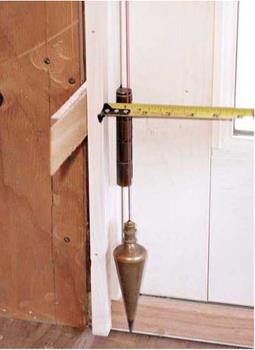
 llll
llll
When jambs are bowed, a plumb bob gives more accurate readings than a spirit level. Hang the bob from a nail near the top of the frame. When the jamb is plumb, readings to the string will be equal along its length.
When there’s too much of a gap where French doors meet in the middle, use a flat bar to ease the jambs toward the middle so you can slip shims behind them. Tweak and reshim the doors till they seat correctly and close evenly in the center.

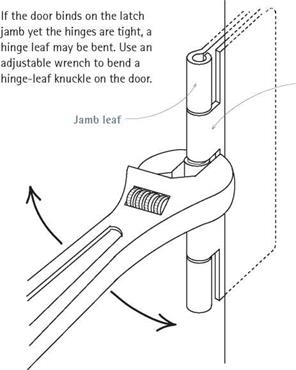






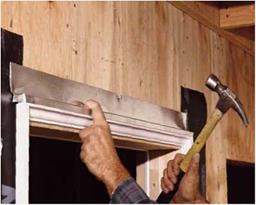
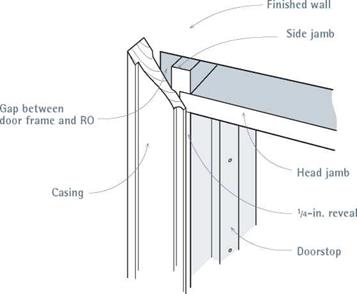

Leave a reply